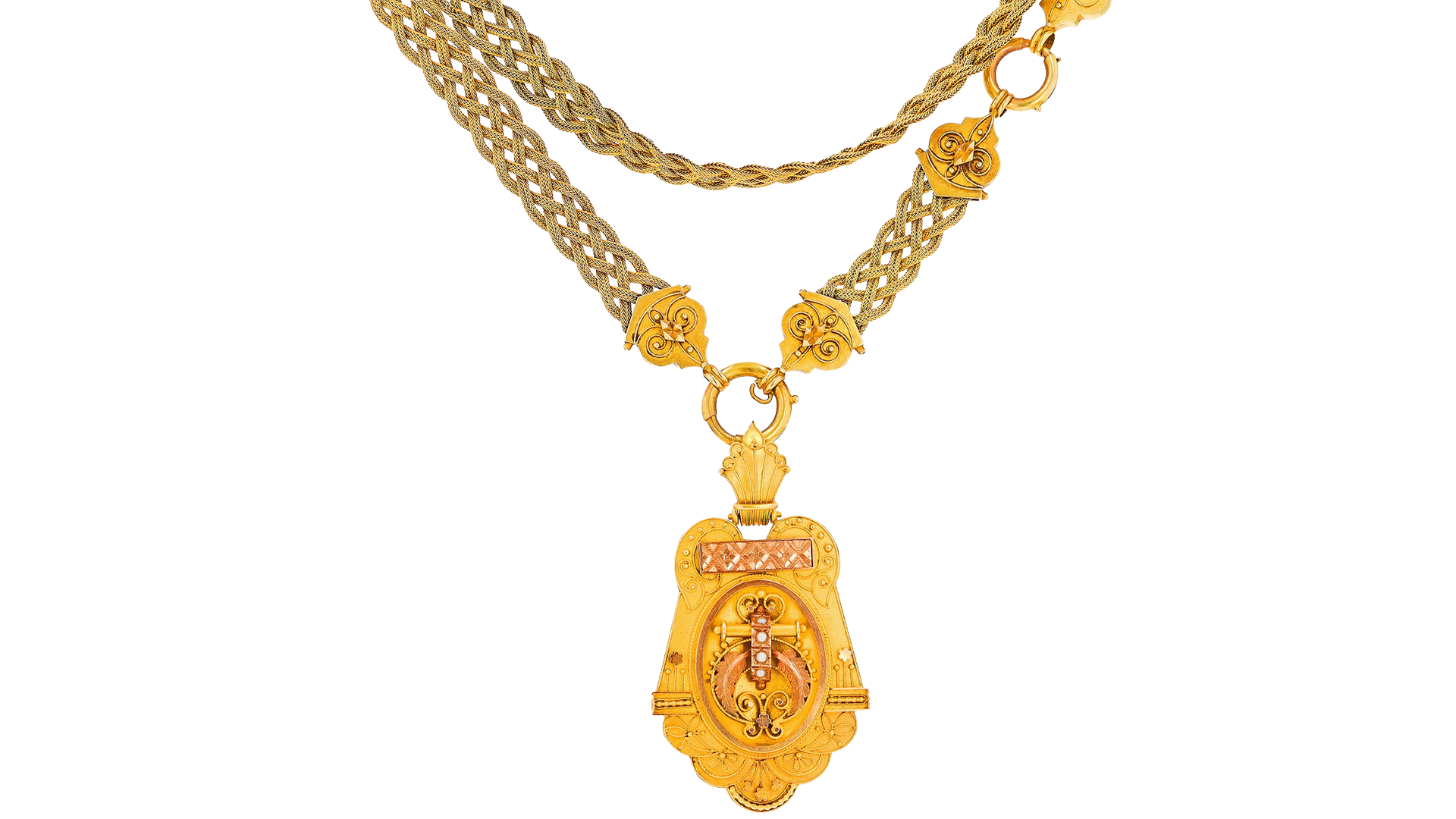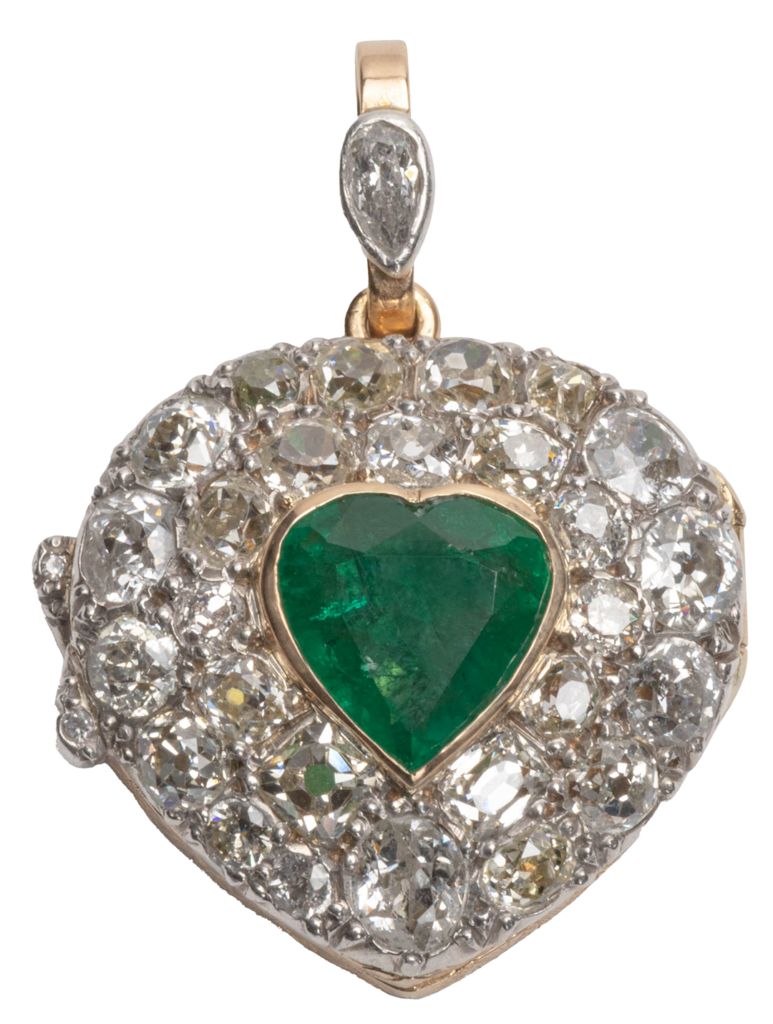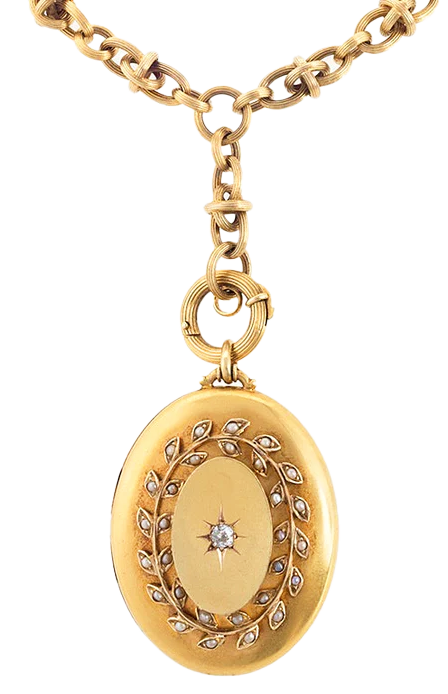One of the most romantic, sentimental and intriguing pieces of jewelry, the locket also had utilitarian purposes. Let’s start by defining a locket. A locket is a small hinged case that opens to reveal an empty space to place very small objects — sometimes secretly. Lockets are frequently worn as necklaces, but they can also be found on bracelets and rings. Originally, lockets were worn by both men and women. Like many jewelry items, early lockets were highly labor intensive, decorated and embellished with engraving and gems, they were reserved for royalty, nobility and the very wealthy because they were so costly to produce.
Lockets are thought to have evolved from ancient amulets that held good luck charms. The evolution of lockets continued over the years and by the middle ages and renaissance lockets were very popular and were worn to ward off evil spirits. Lockets were also used to carry medicinal herbs — or poison. And they functioned as an air freshener. Cleanliness and hygiene in that era were not what they are today and streets were often stinky. Those fortunate enough to have a locket doused a teeny piece of fabric in perfume and tucked it inside the locket, which had piercings to allow the fragrance to waft out.
Queen Elizabeth I and the Chequers Locket
Historically, one of the most famous lockets — known as the Chequers locket — belonged to Queen Elizabeth I, who ruled England from 1558-1603. Throughout her lifetime she wore a ring (allegedly every day, until it was removed when she died) made of mother of pearl and rubies with the initial “E” formed in diamonds and an enameled initial “R”. The top of the ring opened to reveal a miniature portrait of herself on one side and her mother Anne Boleyn — who was executed by Elizabeth’s father Henry VIII — on the other side. Some historians question whether or not the portrait is actually Anne Boleyn, but rather Catherine Parr, who raised Elizabeth. Today, the locket ring is displayed at Chequers, the country residence of the UK prime minister. Queen Elizabeth I was so charmed by lockets that she was known to gift the jewel to favored courtiers and other notables, including Sir Francis Drake.
In the 1600s lockets became political. England’s King Charles I, was executed in 1649 and many of his followers wore a locket with his likeness in it, or in some cases a lock of the King’s hair. Because of the locket’s design, loyalty to the former King was kept hidden and secret.
Queen Victoria’s Lockets
Lockets continued to gain popularity in Europe and while they promised love, they became associated with mourning jewelry. Lockets commonly held a lock of hair or even ashes of a deceased loved one. The jewel hit the height of its popularity during the Victorian era. This of course had to do with Queen Victoria wearing lockets and as Queen she was the ultimate trendsetter. Prince Albert gifted Victoria a bracelet with eight lockets, one for each of their children, with each locket holding a lock of hair. When Albert died, Victoria donned a locket with his portrait and a lock of his hair.
It was also during this time that lockets became more obtainable for the general public. The industrial revolution made it possible to mass manufacture lockets, making them less expensive and more accessible. Photography was also becoming available and photos began to replace hair and portraits. Glass lockets also became popular, showing off what is inside the locket — dried flowers were a popular item. The design on a locket could also have meaning. Engravings of flowers and symbols each sent a message of their own.
There was another surge in popularity of lockets during World War I when soldiers gave their sweethearts and other loved ones a locket with their picture as a reminder to wait for them. Conversely, those left behind gave lockets to soldiers to wear so they could keep their loved ones close even though they were far away. It was a tradition that had been followed years earlier during the American Civil War.
Today, lockets are a treasured jewel that is worn as a token of love, keeping photos of family, lovers, or even pets close to our hearts.
Featured image (top of page): Victorian era locket on a woven chain, locket is 12.8-karat to 13-karat gold, chain is 17-karat gold, courtesy John T. Haynes Inc.
Authored by Amber Michelle



